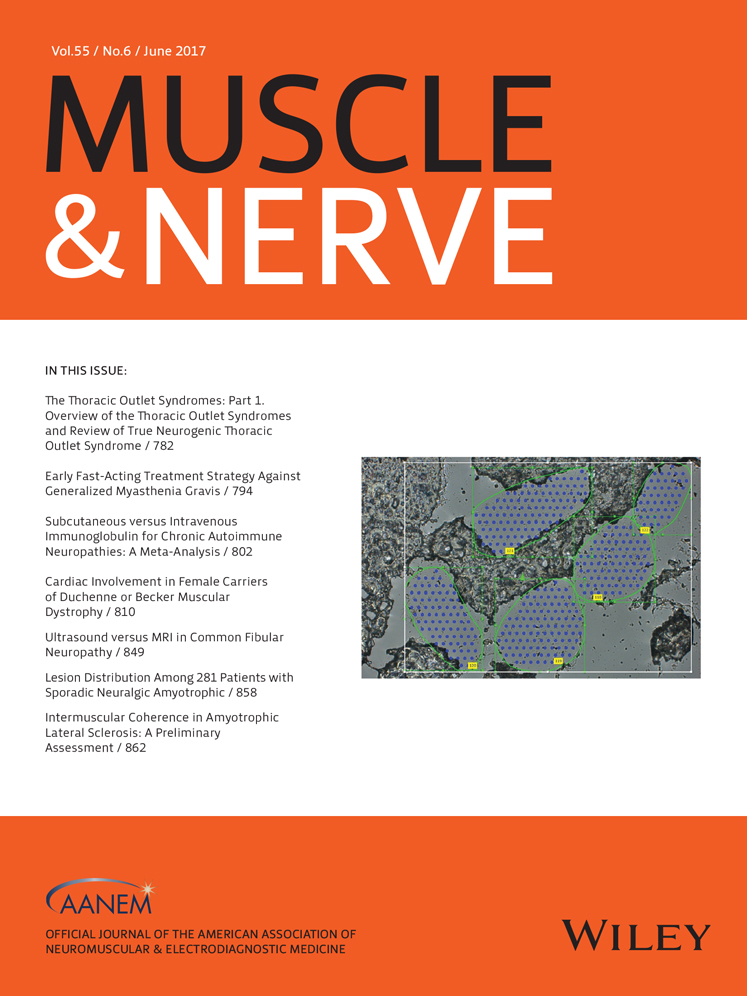Lesion distribution among 281 patients with sporadic neuralgic amyotrophy
Conflicts of Interest: The authors have nothing to disclose.
ABSTRACT
Introduction
The muscles commonly affected by neuralgic amyotrophy (NA) are well known, but the location of the responsible lesions is less clear (plexus versus extraplexus).
Methods
We report the lesion locations in 281 NA patients as determined by extensive electrodiagnostic (EDX) testing.
Results
Our 281 patients had 322 bouts of NA, 57 of which were bilateral, for a total of 379 assessable events. A single nerve was involved in 174 (46%), and 205 (54%) were multifocal. EDX testing identified 703 individual lesions: 699 neuropathies and 4 supraclavicular radiculoplexus lesions.
Conclusions
The frequency of nerve involvement reflects the motor predilection of NA. Involvement of pure motor nerves exceeded that of predominantly motor nerves, both of which far exceeded involvement of more evenly mixed sensorimotor nerves. Cutaneous sensory nerves were least commonly involved. Because of the common C5–C6 innervation, NA often mimics an upper plexus lesion. Extraplexus nerve involvement far exceeded plexus involvement. Distal motor branch involvement explains the severe single-muscle wasting and weakness often observed. Muscle Nerve 55: 858–861, 2017




